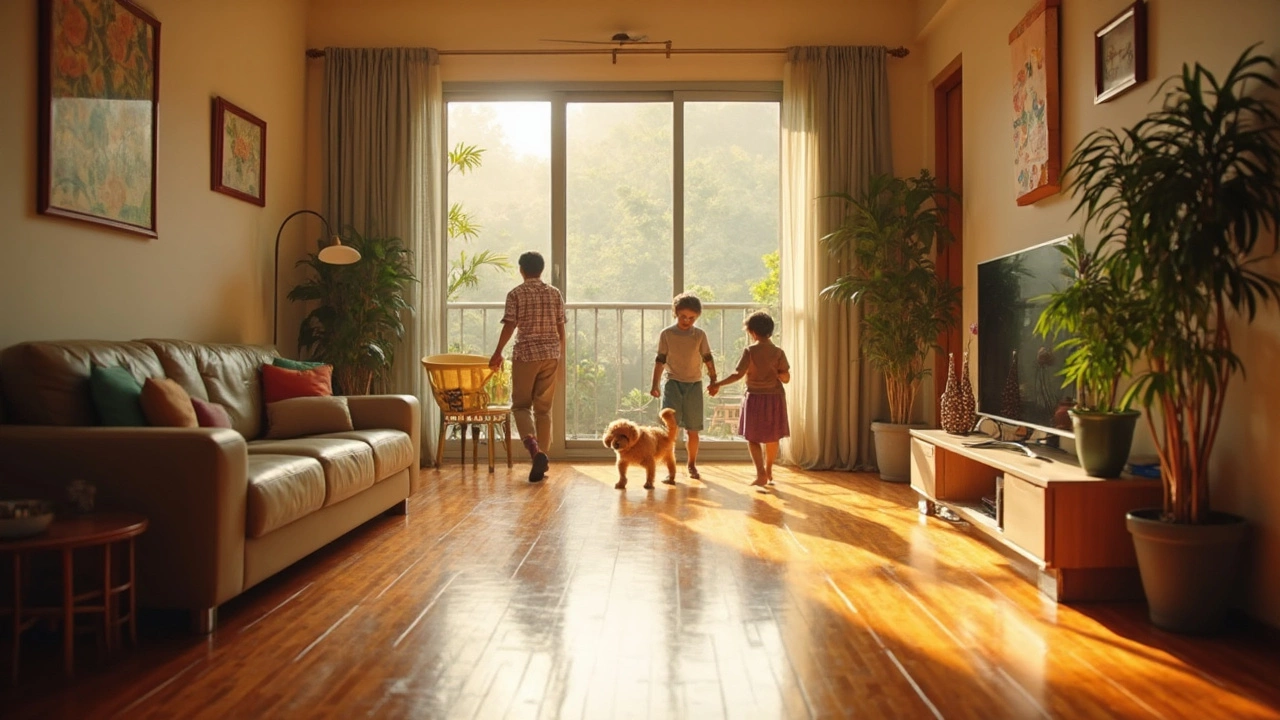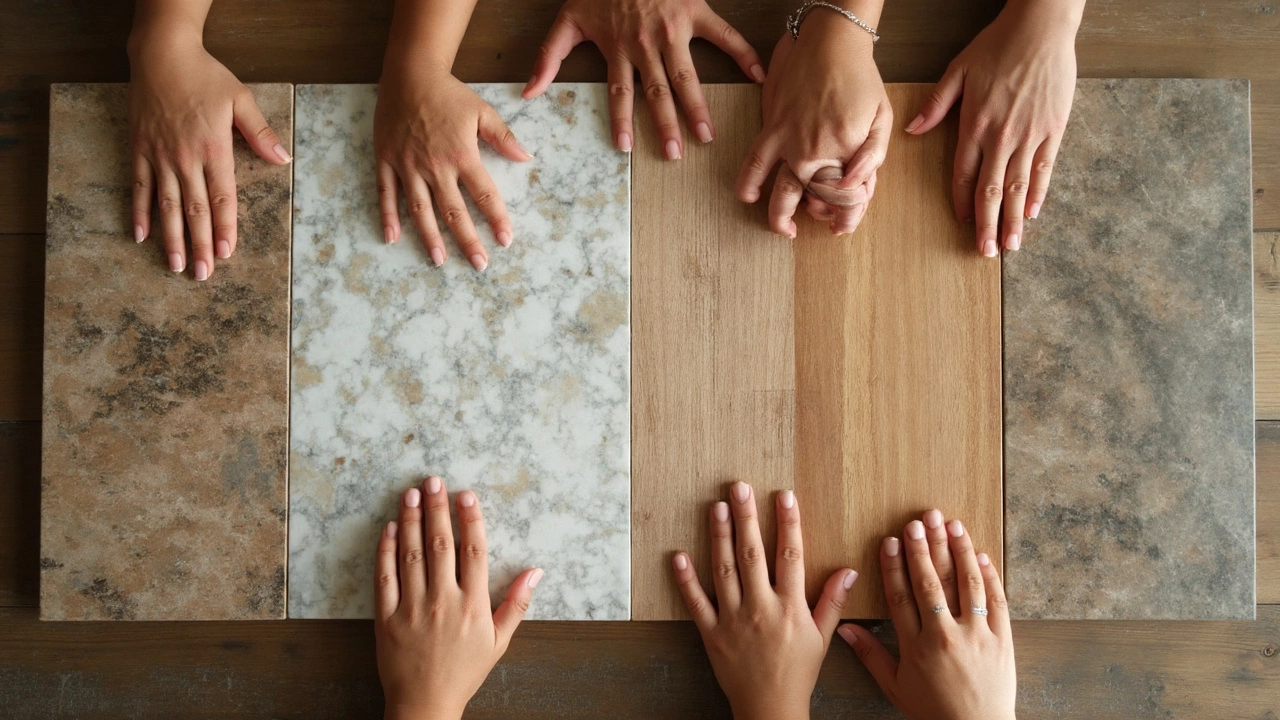Longest Lasting Flooring: What Works Best for Durability?

If you’re tired of refreshing your floors every few years, you’re not alone. Most people want something that stands up to kids, pets, spills, and moving furniture without demanding constant repairs. But the truth is, not all floors are built for the long haul.
Some materials just shrug off daily punishment better than others. Want a hint? Hardwood isn’t always the king, and tile can outlive just about anything if you set it upright. There are also a few newer options that give the classics a run for their money on the durability front.
Knowing exactly what “long lasting” means in flooring terms can save you serious time, money, and headaches. Let's dig into which floors go the distance, why they last, and how you can keep yours looking good as new without major effort or cash outlays.
- What Actually Determines Flooring Lifespan?
- The Heavy Hitters: Flooring Types That Last
- Real-World Wear: How Floors Face Daily Life
- Tips for Getting the Most Out of Your Flooring
What Actually Determines Flooring Lifespan?
So, what really makes one type of long lasting flooring outlive another? It boils down to three big things: the material itself, the way it’s installed, and how you take care of it day to day. Each one has a bigger impact than most people realize.
First up, material really is everything. Solid hardwood, porcelain tile, and natural stone hold up for decades—sometimes even more than a hundred years—if you don’t totally abuse them. Meanwhile, cheaper stuff like basic laminate or builder-grade carpet usually starts looking rough after only a few years.
But here’s the twist: even the best materials can flop if they’re installed badly. Floors that aren’t level, gaps between tiles, or not enough adhesive can all make your flooring wear out faster. That’s why pros always stress good prep work before you lay down a single tile or plank.
"High-quality materials can last 50 years or more, but bad installation can cut that lifespan in half," says flooring contractor Mike Reynolds in Popular Mechanics. "A solid install is just as important as which floor you pick."
Maintenance is the third major factor. A floor that gets vacuumed and cleaned regularly lasts way longer than one that gets ignored. Water damage, dirt, and even sunlight can wreck even durable floors if you let stuff pile up. Some floors need special treatments—think sealing grout or refinishing wood.
| Flooring Type | Average Lifespan (Years) | Needs Regular Maintenance? |
|---|---|---|
| Porcelain Tile | 50+ | Low |
| Solid Hardwood | 40-100 | Medium (Refinishing) |
| Luxury Vinyl Plank (LVP) | 15-25 | Low |
| Carpet | 7-15 | High (Cleaning) |
There’s also the wildcard of plain old daily life. Do you drag furniture instead of lifting it? Are there a couple of Labradors barreling around? Heavy use wears everything out eventually, but some best flooring options handle chaos better than others.
The Heavy Hitters: Flooring Types That Last
If you're gunning for floors that don’t wear out in ten years, there are a few top choices that should be on your radar. Some have been around for ages; some are newcomers that people swear by because of how they hold up under pressure. Here’s where to focus if you want long lasting flooring you won’t have to think about for decades.
Porcelain and Ceramic Tile: These are the champs when it comes to pure toughness. Tile floors can last 50 years or more if installed and grouted well. They’re nearly impossible to dent or scratch, and water just beads off. Spilled coffee? No problem. Crayon masterpiece? Scrubs right off. If one tile cracks, swap it out—it won’t mess with the whole floor. They’re also perfect for kitchens, bathrooms, and mudrooms where moisture is a constant threat.
Natural Stone (Slate, Granite, Marble): Stone floors are basically built for eternity. Museums and old buildings all over the world still have their original stone floors after a century or more. Slate is especially solid and less slippery; granite wins for sheer hardness. They might need resealing every few years, but that’s a small price for floors that will probably outlast your house.
Solid Hardwood: If you want the “classic” wood look, solid hardwood is the way to go for durable floors. A genuine hardwood floor can take a beating for 30 to 100 years, especially if you choose harder woods like oak, maple, or hickory. Just remember: moisture is not hardwood’s friend, so keep it away from bathrooms and basements.
Luxury Vinyl Plank (LVP): Don’t let the name fool you—this is not your grandma’s linoleum. Modern LVP can handle a decade or two of heavy wear, and if you get good quality and install it well, you can squeeze 20-25 years out of it. It fends off scratches, laughs at spills, and comes in every style you can imagine. Plus, it’s a good pick if you love the look of wood but want something nearly bulletproof for the kids or dog.
Some floors, like laminate or engineered wood, can also bring long life if you pick a quality brand and keep water away. But tile, stone, hardwood, and LVP are proven leaders for best flooring options that hang around for the long haul.
| Flooring Type | Typical Lifespan | Best For |
|---|---|---|
| Porcelain/Ceramic Tile | 50+ years | Kitchens, bathrooms, high-moisture areas |
| Natural Stone | 100+ years | Entryways, kitchens, living spaces |
| Solid Hardwood | 30-100 years | Living, dining, bedrooms |
| Luxury Vinyl Plank | 20-25 years | Family rooms, kitchens, basements |
Bottom line: If you want flooring types that shrug off decades of real life, any of these will work—just match your pick with your lifestyle and room.

Real-World Wear: How Floors Face Daily Life
You can pick what looks good in the showroom, but daily life will show you real quick which long lasting flooring actually holds up. Kitchens, hallways, and living rooms? They all deal with thousands of steps, sliding chairs, dropped pans, spilled drinks, and the regular chaos that comes with kids or pets.
Take hardwood floors, for example. They can last for decades, but they’re not bulletproof. Scratches, dings, and water can be a problem. Some species like oak and hickory get fewer dents, but even the toughest wood hates standing water. Quick fact: according to the National Association of Home Builders, solid hardwood usually lasts up to 100 years with proper care, but high-traffic spots might need sanding every 7-10 years.
Tile is a beast when it comes to durable floors. Ceramic and porcelain tile regularly see 50+ years of service, often outliving the rest of the house. Unless you whack them with something heavy, they’re basically immune to messes, water, and even most pets. The downside? Drop a mug, and that mug is toast.
Luxury vinyl plank (LVP) is showing up a lot because it’s tough and simple to clean. It stands up to scratches and water better than wood. Some brands even offer warranties for 20-30 years. If you have a wild household, this stuff is getting more common for a reason.
Here’s a quick look at how some popular flooring types stack up against the messes and traffic of regular life:
| Flooring Type | Average Lifespan | Stands Up To | Weak Spot |
|---|---|---|---|
| Hardwood | 30-100 years | Foot traffic, furniture | Water, scratches |
| Porcelain Tile | 50+ years | Water, stains | Cracking on impact |
| Luxury Vinyl Plank | 20-30 years | Spills, scratches | Fading from sunlight |
| Laminate | 15-25 years | Light traffic, stains | Water damage |
As John McGrath from the International Standards & Training Alliance put it:
"How your floor ages comes down to three things: what it’s made of, how you use it, and how you treat it. Most floors aren’t destroyed by time—they’re murdered by misuse."
Bottom line, if you want the best flooring options for daily life, don’t just get wowed by surface looks. Think about the mess, the traffic, the weird accidents, and what your family’s really like day-to-day. Choose the option that matches how you actually live—not just what’s trending on Instagram.
Tips for Getting the Most Out of Your Flooring
You’ve picked a long lasting flooring—now you just want it to look new for as long as possible. It’s not rocket science, but a few everyday habits will make all the difference.
- Don’t skip the mats. Put doormats at every entrance. You’d be amazed—according to the North American Laminate Flooring Association, a good doormat can reduce tracked-in grit by about 80%. That’s less scratching, especially on hardwood and tile.
- Clean up fast. Spills are trouble for almost any floor—especially wood and some laminates. Make it a rule to wipe things up as soon as you see them. No fancy cleaners needed, just a soft cloth for most stuff.
- Use furniture pads. Slapping a set of felt pads under chairs and tables keeps scratches away. It sounds basic, but deep gouges ruin even the toughest durable floors.
- Skip the heavy soaking. Mopping is needed, but don’t go overboard—too much water can hurt hardwood, laminate, and even some tile grout. Damp is fine; soaking is trouble.
- Stick to the right cleaners. Bleach and ammonia aren’t your friends here. They can dull the finish on many flooring types. Stick to what the manufacturer says, or go mild.
Got pets? Trim those claws every month. Even the best best flooring options for durability will show scratches if Fido gets too wild indoors.
Want numbers? Here’s a quick cheat sheet showing how often basic care can help extend the lifespan of common flooring types:
| Flooring Type | Dust/Sweep | Deep Clean | Reseal/Refinish |
|---|---|---|---|
| Hardwood | 2-3x per week | Monthly | Every 3-7 years |
| Tile | 2x per week | Monthly | Seal grout every 1-2 years |
| LVP/Laminate | 2x per week | Monthly | Not needed |
One last thing—high heels, moving furniture, and sand are the usual flooring killers. Keep them in check, and your floors will outlast just about anything else in your home.